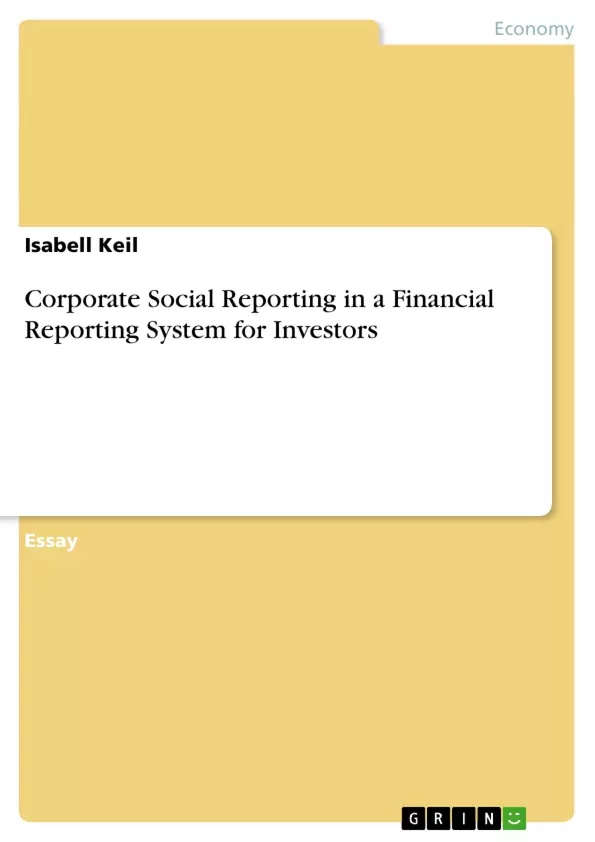This essay will give a short overview of the discussion about corporate social reporting (CSR), its implementation and the contradiction with traditional financial reports. First iIt will explain the role of traditional reporting and the reason for the increasing significance of CSR. The next part is about various Iideas and attempts how to implement CSR in practice will then be discussed with. In the last part, the essay shows the difficulties, advantages and disadvantages of CSR.
Inhaltsverzeichnis (Table of Contents)
- The Role of Traditional Reporting and the Reason for the Increasing Significance of CSR
- Accountability in Financial Reporting
- The Increased Significance of Corporate Social Responsibility
- Various Ideas and Attempts to Implement CSR in Practice
- Inventory Model
- Goal Accounting and Reporting Model
- Social Indicator Model
- Conceptual Models of Socially Responsible Accounting
- Operational Models of Socially Responsible Accounting
- Difficulties, Advantages and Disadvantages of CSR
Zielsetzung und Themenschwerpunkte (Objectives and Key Themes)
This essay examines the development of corporate social reporting (CSR) and its relationship with traditional financial reporting. It explores the historical context, the evolution of stakeholder expectations, and different models for implementing CSR.
- The evolving role of accountability in financial reporting
- The increasing significance of corporate social responsibility in a globalized world
- Different models for implementing CSR, including inventory, goal accounting, and social indicator approaches
- The challenges and benefits of incorporating social and environmental considerations into corporate reporting
- The importance of stakeholder engagement and feedback in CSR
Zusammenfassung der Kapitel (Chapter Summaries)
- The Role of Traditional Reporting and the Reason for the Increasing Significance of CSR: This section introduces the concept of accountability in financial reporting, tracing its roots back to the 19th century. It discusses the traditional focus on shareholder interests and the growing importance of reporting on wider social and environmental issues. The section also examines factors driving the increased emphasis on CSR, such as globalization, improved communication technologies, and the rise of socially conscious investing.
- Various Ideas and Attempts to Implement CSR in Practice: This section explores different models for incorporating CSR into corporate reporting. It examines the inventory model, which expands traditional reports to include social aspects, the goal accounting model, which emphasizes stakeholder engagement and feedback, and the social indicator model, which focuses on objectivity and comparability of social data. The section highlights the challenges and advantages of each model.
Schlüsselwörter (Keywords)
Corporate social reporting (CSR), financial reporting, stakeholder engagement, accountability, social responsibility, environmental disclosures, inventory model, goal accounting model, social indicator model, ethical investments, globalization.
- Arbeit zitieren
- Isabell Keil (Autor:in), 2002, Corporate Social Reporting in a Financial Reporting System for Investors, München, GRIN Verlag, https://www.grin.com/document/28896



